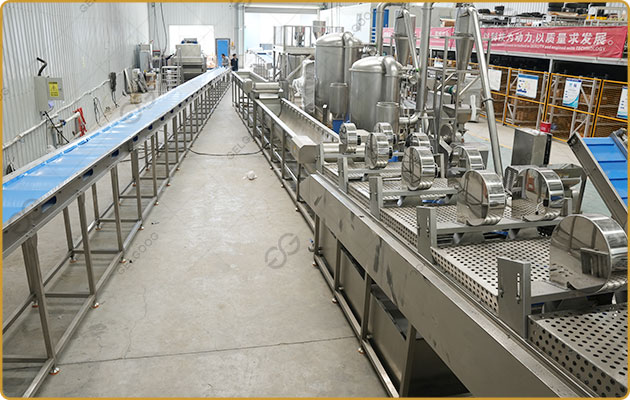Banana powder has emerged as a versatile superfood, valued for its long shelf life, nutritional density (rich in potassium, vitamins, and fiber), and applications in infant nutrition, baked goods, and supplements. Establishing an industrial banana powder processing unit requires strategic planning around technology, workflow, and quality control. Here’s a comprehensive overview:
Banana Powder Processing Unit Core Processing Workflow
Preparation Stage:
Washing & Sorting: Green bananas (70–80% ripe) are rinsed in bubble washers to remove dirt, followed by manual sorting to discard damaged fruits .
Blanching & Peeling: Bananas are blanched in hot water (90°C) to deactivate enzymes, cooled rapidly, then peeled manually or via automated peelers.

Slicing & Color Protection:
Uniform slicing (2–5 mm thickness) using food-grade stainless steel slicers ensures even drying .Slices undergo anti-oxidation treatment (soaking in 2% ascorbic acid) to prevent browning .
Drying:Multi-layer belt dryers reduce moisture to <5% at 60–70°C. Heat sources (natural gas, electricity) are adjustable for efficiency 15. Alternative methods like spray drying are used for puree-based powder .
Grinding & Packaging:
Hammer mills grind chips into 10–120 mesh powder, with air-cooling to prevent nutrient loss .Powder is packed in moisture-proof aluminum foil bags via automated fillers (30–60 bags/minute)
Conclusion
An optimized banana powder processing unit blends automated technology (e.g., PLC-controlled drying) with stringent quality checks. By selecting modular equipment and targeting niche markets like baby food or supplements, producers can achieve payback within 2–3 years. As health-conscious consumers drive demand, this sector offers a ripe opportunity for innovation and growth.